Xiaomi
Xiaomi Mi 8 Pro smartphone: the price of aesthetics
Aprox. 369€ - see price -
See specificationsWhen it was released in August 2018, the Mi 8 represented the high-end of Xiaomi. Not content with making a mobile with the best components of the time, Xiaomi released a few months later the Mi 8 Pro, an even more powerful version of the same mobile.
Our review
Presentation
Arrived a year ago in our borders, Xiaomi continues to flood the market. After hitting hard in the entry level with a Redmi Note 5 and then a quality Redmi Note 6 Pro, the Chinese manufacturer is gradually turning to the high end.
So, a few months after a convincing Mi 8, Xiaomi launched the Mi 8 Pro in Spain. A high-end version with a few aesthetic and technological additions. Named Explorer Edition in Asia, this model is positioned a bit more expensive than the original Mi 8. It is thus launched at € 599 and is placed against the champion of this category, the OnePlus 6T, but also against the RX17 Pro.
Are these changes enough to justify its price? This is what we will see ...
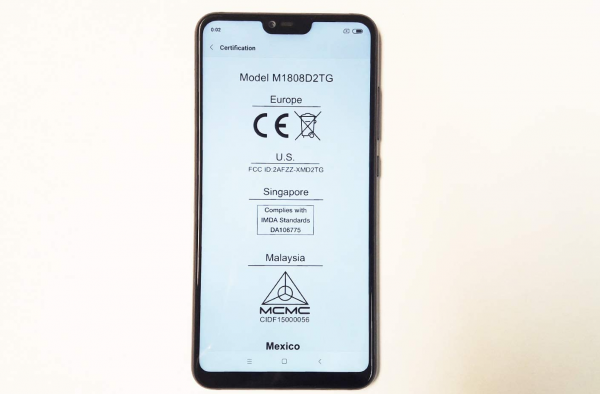
Ergonomics and design
The design of the Mi 8 Pro is probably one of the points that most differentiate it from the "standard" version. The transparent shell that lets you see the components of the phone does indeed have its small effect ... until you realize that everything is wrong. The shell is very transparent, but the printed circuit below is a piece of plastic and the streaks that we see on the battery are actually a sticker stuck on the component. This does not detract from the wow effect and the aesthetic bias, but you have to know. Finally, the only defect of this shell is that it catches a lot of fingerprints.
From the front, there is a certified copy of the Mi 8 with a notch of substantial size. The thick bottom border is also still there. And if the phone is a bit heavy (177 g), the finishes are exemplary and it really feels like you are holding a high-end mobile in your hands. The red On / Off button also gives a certain cachet to the device. Obviously, the 6.2 inch screen prohibits any use with one hand.
On the technical side, the phone has a USB-C port and two SIM slots, but is unfortunately deprived of IP68 waterproofing certification or microSD slot. We will have to be satisfied with the 128 GB on board - which should be enough for the vast majority of uses. A word on the sensor under the screen, which works surprisingly well and is rather fast. Not quite at the level of conventional sensors, but definitely as good as that of the OnePlus 6 T.
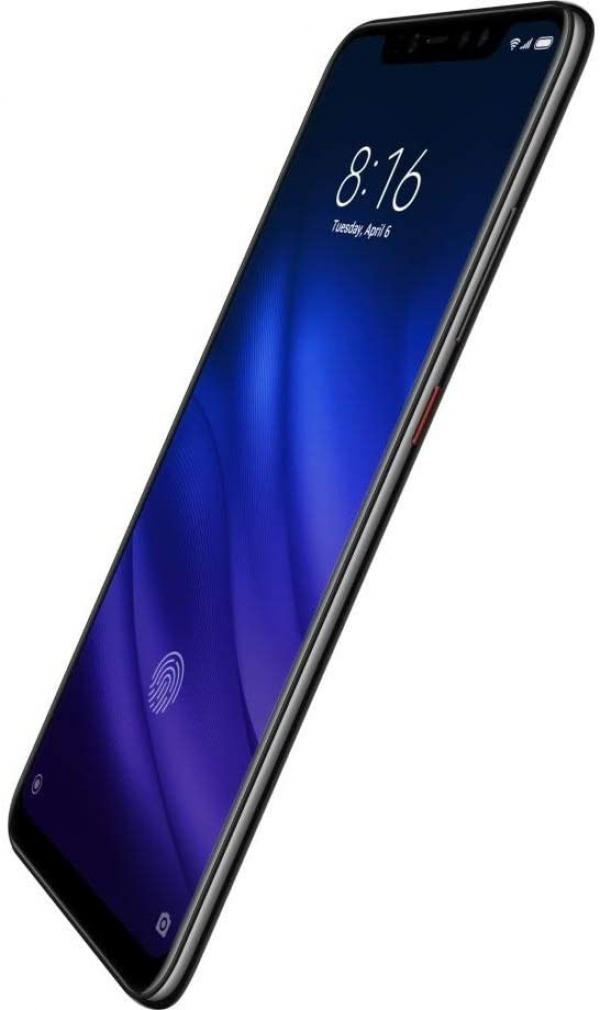
Screen
On paper, the Mi 8 and Mi 8 Pro share a similar screen, namely a 6.21-inch Oled panel with an 18.7: 9 ratio displaying at 2,248 x 1,080 px. However, that of the Mi 8 Pro displays slightly improved performance. Thus, in addition to its infinite contrast ratio and zero persistence, the screen benefits from a slightly better controlled colorimetry. It is however necessary, as often with Xiaomi, to take a tour in the settings to make the most of the panel.
Thus, by going to the "Display" section, click on "Contrast & colors" to arrive at the three screen profiles (Automatic contrast, Increase contrast and Default). Choose the latter for better color rendering. With this setting, the screen of the Mi 8 Pro delivers all its potential offers a very good average Delta E (1.5) and a color temperature close to perfection (6 816 K). Two more accurate values than those delivered by the original Mi 8 panel.
Question readability, the Mi 8 pro is also doing very well too. The maximum brightness reaches 637 cd / m², which allows it to remain readable in all circumstances. Good news also, the minimum goes down to 3.3 cd / m², which is low enough not to burn the retinas while surfing at the bottom of the bed. In addition to that, the reflectance is rather contained.
Finally, in use, nothing to report. The resolution of 400 pixels per inch is more than enough to surf with ease and precision while enjoying a good density of information on the screen.
The tactile delay is 70 ms, which is low enough not to interfere with use. In short, the panel of the Mi 8 Pro is a success on almost all points.
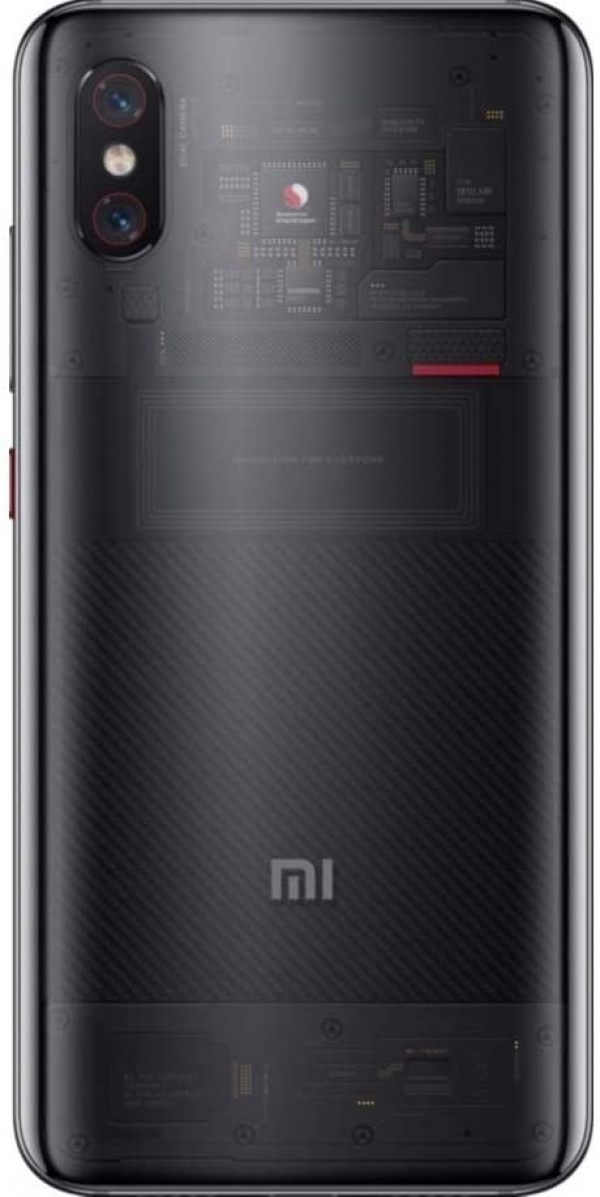
Performances
With its Snpadragon 845 chip and 8 GB of RAM, the Mi 8 Pro has absolutely no trouble running Android and all the apps in the Play Store. Everything runs with perfect fluidity and surfing the web is a real pleasure.
The mobile also has the good taste of not overheating and never points above 36 ° C. No risk of getting your fingers fried.
Not surprisingly, the Mi 8 Pro is a video game monster and has no trouble turning the most demanding titles in the Play Store to the maximum level of graphics.
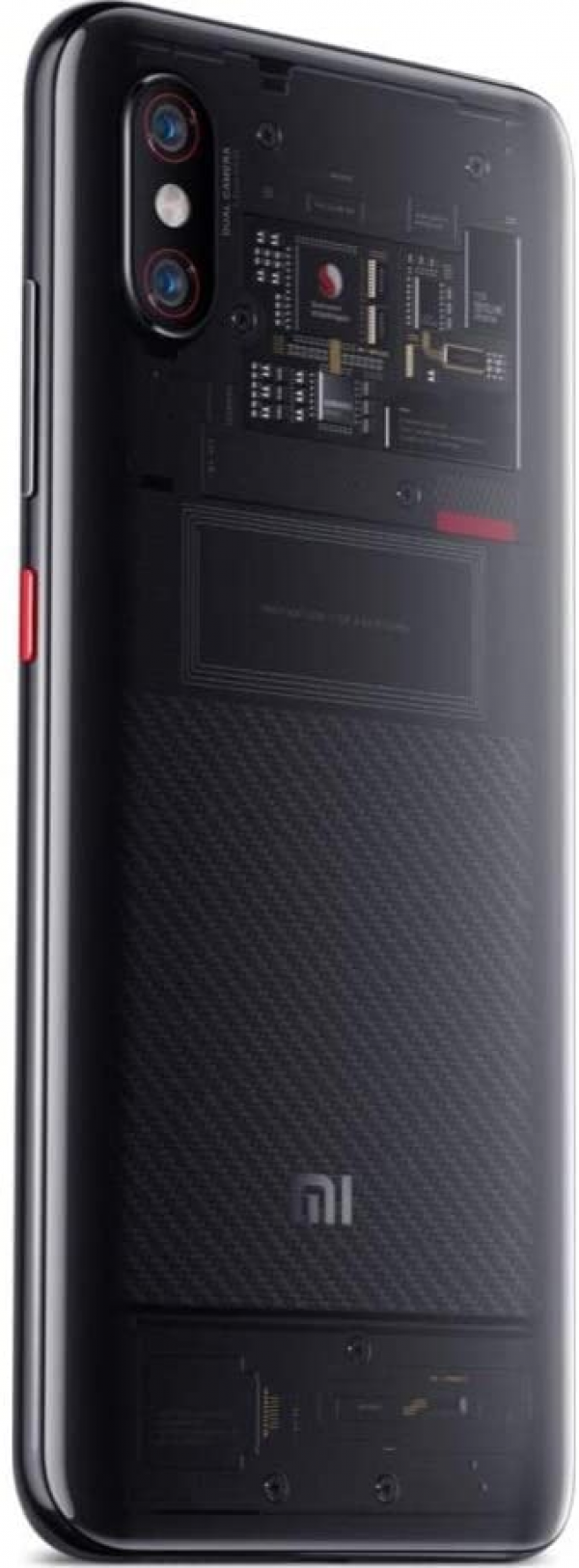
Audio
The headphone output of the Mi 8 Pro is unfortunately not as good as that of the Mi 8. The output power is weaker and the dynamics less wide. The signal is however still as clean and the separation of the channels well marked. We have seen much better on this point, but these results remain correct overall.
The single speaker - on the bottom edge of the device - delivers precise treble and bass, but tends to saturate slightly at full volume.
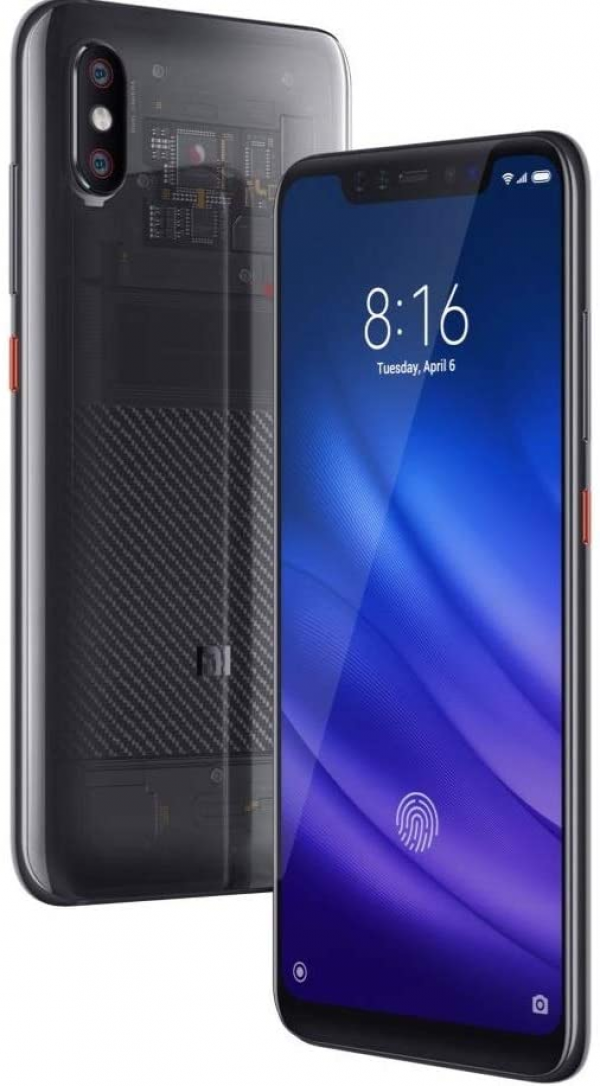
Photo
On the photo side, the Mi 8 Pro has kept exactly the same elements as the Mi 8. We therefore find a main sensor of 12 Mpx f / 1.8 (equivalent 28 mm in 24x36) and a second of 12 Mpx f / 2.4 (56 mm equivalent in 24x36). Enough to offer a "2x zoom" to which we will return. Let's first take a look at the results of the "standard" sensor.
Not surprisingly, they are very similar to those of the Mi 8. The details are there, but the colors are pale. The scene also lacks slightly contrast, which contributes to the lack of relief of the shot. The photo is far from being mediocre, all the elements are there, just not quite highlighted enough. Pity ...
At night it is another story. The Mi 8 pro manages to keep a good white balance and a correct sharpness, but the digital noise and the grain settle everywhere and a pronounced vignetting effect comes to nibble the edges of the image. Despite all the rendering is a bit more natural than that of the OnePlus 6T, especially with a better controlled white balance. On the other hand, the 6T manages to smooth and erase digital noise without erasing details.
The second sensor which acts as a "zoom" is however much less convincing. The colors are always too pale and large clusters of pixels cause loss of precision and sharpness. And at night, the sensor does not see much. Suffice to say that we will use the zoom sparingly and only when the light conditions are ideal.
The front sensor produces rather pleasing results in bright light. The treatment is less aggressive than on the rear module and the subject well put forward thanks to a good dose of details and a properly controlled contrast. On the other hand, when the light is lacking, the grain settles and makes lose the details of the photographs. Portrait mode on the other hand, whether via the front or rear module, is not very successful. The latter requires standing at least two meters from the subject and produces an extremely light bokeh without succeeding in correctly cutting the subject. Pity ...
Nothing to declare on video. Whether in Full HD or 4K, the phone manages to record images without flinching. Note, the presence of a slow motion mode at 120 fps.

Autonomy
If there is one sector where this Mi 8 is not Pro, it is on the side of autonomy. Strangely, Xiaomi did not see fit to keep the Mi 8,400 mAh battery, preferring to replace it with a 3,000 mAh battery. Logically, the phone therefore does worse than the Mi 8 and tops out at 1:25 pm on our autonomy test.
In practice, the Mi 8 Pro will last a day and a half if your use is moderate; not overwhelming when more and more high-end models have endurance of at least two days. Good news, however, it takes just over an hour to recharge the phone.
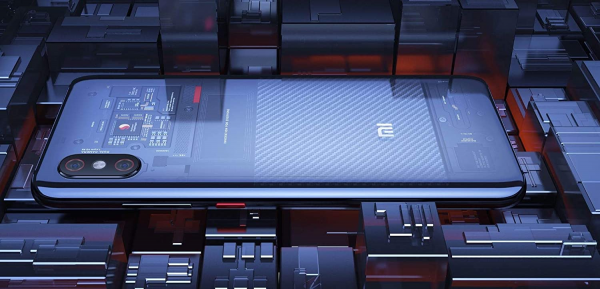
Conclusion
In the end, the minor adjustments made by this Mi 8 Pro are not enough to justify the inflated price of the device. Especially that for this price, the OnePlus 6T makes fewer concessions in terms of photo and autonomy - and you will always have the fingerprint reader under the screen. All this for around fifty euros less. The Mi 8 Pro is a successful phone, but it's struggling to keep up with the competition.
Specifications
Reviews

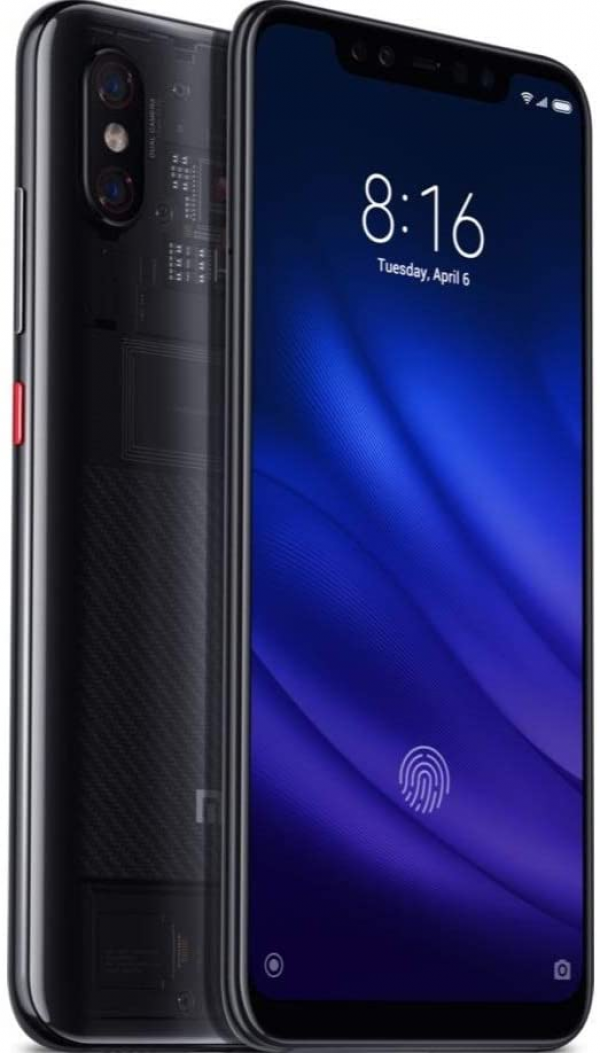
great phone!!
THis phone is great! very very fast! as fast as a one plus 6T. great screen, well built! But .. the reason i return it is .. since its an international phone ... it doesnt work with AT&T LTE where i live. (Illinois Far SW suburbs) ... I get many dropped calls, no ring and straight to voicemail, no signal at times inside my home. If you live where there is a strong ATT signal././ this might work for you. A truly good phone! ALSO, i want to give 5 STARS to the company i bought it from ... MEGA MOBILE USA, INC ... in Rochester, NY .. they are great company to work with and refunded my money in time! ... thumbs UP to them!
Great PHONE, but for U.S. and AT&T no LTE
Loved the phone, snappy, smooth and looks gorgeous. Only thing is there's no WIFI CALLING, LTE is erratic in my area that's why WiFi calling is a must, got dropped calls here and there and messages sometimes is late, fingerprint is hit or miss and the phone will reboot by itself sometimes after updating to PIE. Maybe it will take sometime to settle down, just got it yesterday but only the LTE signal is the problem others might be fix by software update.
Great accurate double GPS! Battery not enough.
This phone is awesome! Is super fast! While driving between very tall buildings, the dual frequency GPS / Glonas / Galileo is very accurate and it refreshes in two or one or less than one second. I needed to return it because unfortunately the battery does not last a whole day even with moderate use. I think most users will be willing to hold a heavier phone with a bigger battery that can last the whole day!
Amazing tech for the money, meh connectivity
screen quality is amazing. Phone is super fast large amount of RAM. the one generation old top-of-the-line processor the phone can handle anything you throw at it. The in screen fingerprint sensor is good but it's a little finicky, if the screen isn't super clean it struggles. The UI is actually pretty good, and the form factor of the phone is beautiful. camera quality is far superior to what I was expecting low-light image qualaity and video quality surprisingly good.
the phone either seems to have issues connecting to the listed LTE bandwidth or doesn't connect at all. Certain areas it would say I have full LTE but would show no connection when trying to use it. I checked the listed LTE bandwidth against my cell provider, and location, and there should have been no issues. I always had cell service was always able to make phone calls send texts, but SMS was an issue using the maps which struggle sometimes.
I can't give the phone a terrible review for that, but obviously we buy cell phone so that we can use them on the go.
For the money I would still highly recommend this phone just make sure that you double check the cell bands in your area, it might be a risk.
GPS dual no es submetrico
La tan publicitada precisión su métrica no se cumple. So es cierto el móvil capta más satélites no es cierto que sea submetrico. The precisión es solo de 4 metros. La verdad compre ese móvil para el trabajo por el GPS dual. Sin embargo a hoy me siento estafado. Por lo demás muy bien.
Not Safe unless you are in China (don't buy from Amazon!) read more
This phone was sold without the option of a warranty. I didn't think this would be an issue but I may have been sent a defective device and about a week before the return period was up - about 3 weeks into having received it, the screen turned black and the touchscreen became unresponsive. I contacted Amazon who directed my to Xiaomi US, saying that my phone was under manufaturer's warranty. Xiaomi US directed me to Xiaomi Global who responded by emailing me a standard list of troubleshoots while informing me that there was no warranty because it was purchased on Amazon. The next day the Amazon return period ran out and my issue remained unresolved. It costs about the same as the phone itself to have a replacement screen shipped from CHINA and then repaired. I have had the phone for less than a month and it is now rendered useless with neither the Xiaomi or Amazon doing anything to help beyond suggesting irrelevant troubleshoot options. If you don't live in or close proximity to china, I would highly suggest not risking it.
Scanner is not accurate.(finger print scanner)
The only problem is the scanner. Sometimes works and sometimes doesn't work. That's why I returned the phone. Battery life is great, signal and 4GLTE works good. No issue with the connection.